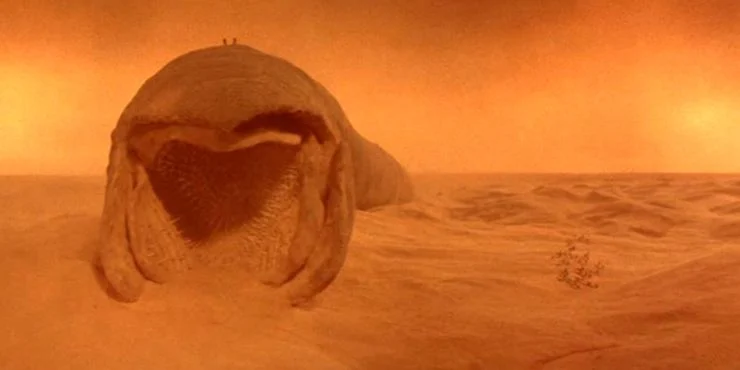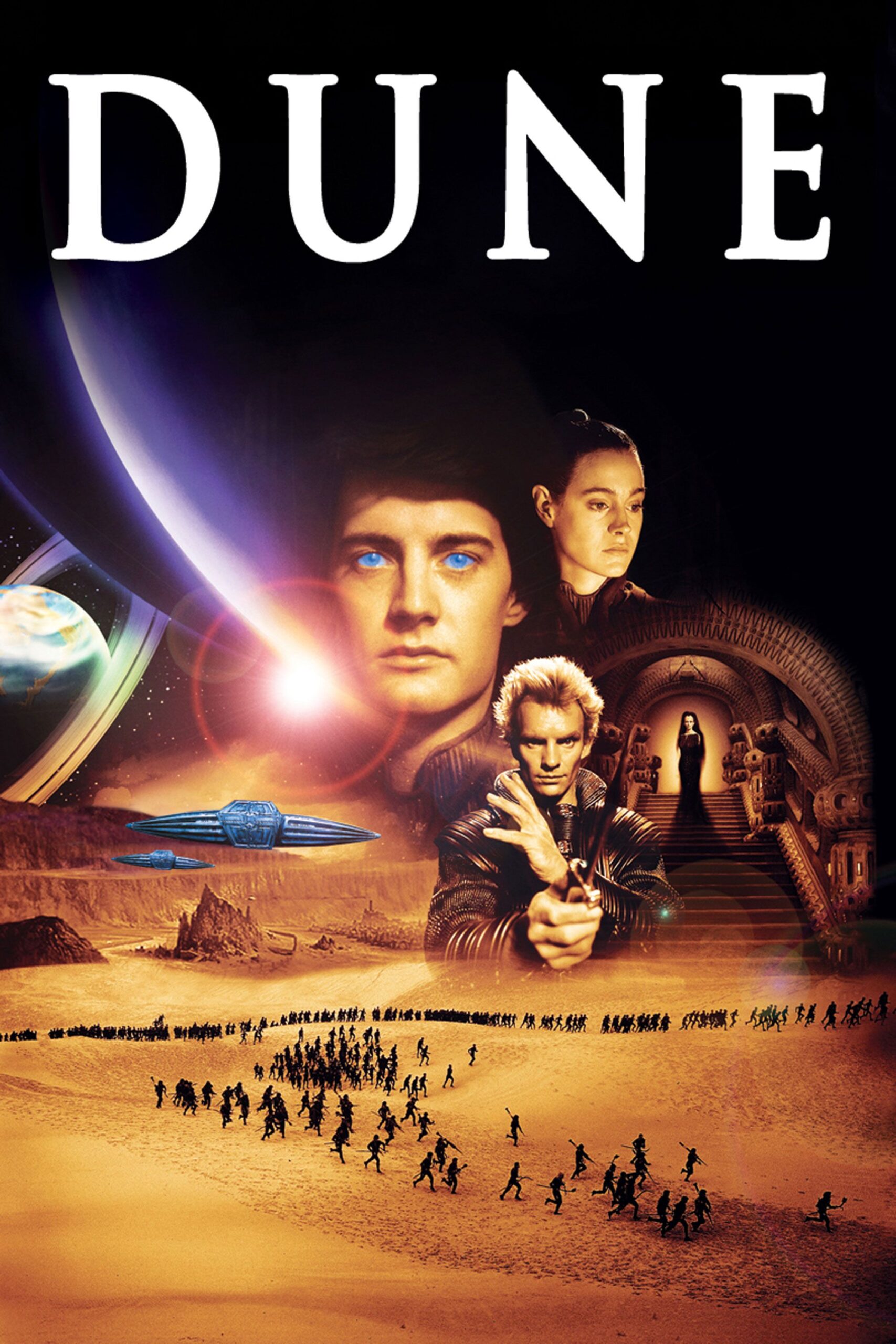‘Dune,’ Frank Herbert’s first novel in the series, received overwhelmingly good reviews from critics and was nominated for both the Nebula Award for Best Novel and the Hugo Award for Best Novel. It is also widely regarded as the best-selling science fiction novel of all time. Herbert’s ‘Dune,’ like many great works of literature, was rejected by more than a dozen publishers before being released by a company that specialized in vehicle manuals, among other things. The novel is a success story in and of itself, but it is its content that has made it a favorite among those who want to write or create science fiction.
The Dune universe is a complicated one, set in futuristic society thousands of years ahead of our own. It is a period where computers are no longer used, and no one is permitted to create machines that think like a man. The Butlerian Jihad was the purging of human mind-like computers. It became obvious that humans needed to expand their mental abilities. The spice mélange entered the scene at this point; it was an awareness spectrum narcotic that increased an individual’s consciousness as well as their body’s longevity.
However, this came at the cost of spice addiction. Several intergalactic peoples waged wars and conspired against one another because the spice mélange was the most profitable and vital commodity in the universe. David Lynch directed the first Dune picture in 1984, which was followed by two television series in 2000 and 2003. While Lynch’s film did a good job of bringing most of the book to life, critics and Dune fans felt that it lacked cohesion and strayed from the source material. Furthermore, stuff like personal monologues and the like were a real hassle.
Despite this, Lynch’s film has become a cult classic because it was a successful attempt to condense a very comprehensive novel into a film. Denis Villeneuve, the guy behind films like the 2016 sci-fi blockbuster ‘Arrival,’ is directing the second Dune film, which will be released later this year. In this video, we will delve into David Lynch’s ‘Dune,’ answering some of the film’s long-standing questions while also examining the film’s variations from the novel. Are you ready, Fremen of Arrakis, to go into the depths of the sand dunes?
The year is 10191, and the known universe has become a den of intergalactic feudal politics and war. The Padishah Emperor Shaddam Corrino IV rules the universe, but his popularity grows weaker by the day. Also, all civilizations across various planets depend on a precious substance known as the spice mélange; a substance that extends life expands consciousness, and enables space travel. Amidst these planets and different societies, exists the mighty and feared Spacing Guild and its navigators, who use orange spice gas to fold space and travel to and fro the far reaches of the universe without moving.
The Spacing Guild caught the attention of four planets; they were Kaitan, which was the home of Padishah Emperor Shaddam Corrino IV, Giedi Prime, which was the home of House Harkonnen, Caladan, which was the home of House Atreides, and Arrakis, a hot and arid desert planet and the only place where the spice mélange was found. The Guild also sensed that there was a plot to jeopardize the spice production, so they dispatched a stage three Navigator to Emperor Shaddam to demand explanations.
Emperor Shaddam was quick to disclose his plans to destroy the House of Atreides because the Emperor was growing worried about Duke Leto Atreides’s growing popularity. He suspected that the Duke was building a secret army with a technique that had something to do with sound. Naturally, Duke Atreides was a threat to the Emperor. It would have been unwise to attack the Duke on Caladan. So, he devised an elaborate plan to give the Duke control over Arrakis by replacing the Harkonnens.
The Harkonnens would later launch a secret surprise attack on the Duke in Arrakis, and eliminate him and the House of Atreides. The Navigator, however, asks the Emperor to assassinate Paul Atreides, the son of Duke Atreides. But this plan of assassination became known to the Bene Gesserit sisterhood, who were alerted. It turned out that Paul was a part of an ancient breeding program that was intended to find the Kwisatz Haderach; a child that would have the ability to access the genetic memories of ancestors.
The Duke, Paul, and an armada of the House of Atreides are set to leave for Arrakis to seek control, but before that happens, Reverend Mother Gaius Helen Mohiam tests Paul by subjecting him to excruciating pain and physical suffering. He passes her test by withstanding more pain than anyone else had, before him. Meanwhile, Baron Vladimir Harkonnen on Geidi Prime reveals to his nephews Feyd Rautha and Glossu Rabban the plan of eliminating the House of Atreides. Baron Vladimir Harkonnen had managed to manipulate someone extremely close to the Duke and also turned a traitor out of this someone.
On planet Caladan, the Atreides begin the course of their journey to Arrakis. Arrakis was a planet with vast deserts and rocks. The major denizens included the enormously huge sandworms and a people called the Fremen, who believed that one day they would be led to true freedom by a messiah. Upon their arrival, Duncan Idaho, one of Duke’s close confidants, tells him that the Fremen could be used as powerful allies.
And, the Fremen initially trusted the charismatic and just leader, but before they could forge any significant alliance, the Harkonnen launched a massive attack and took over the House of Atreides on Arrakis. The attack was successful because of the involvement of Doctor Wellington Yueh, who had his own personal motives. Later, the Baron got Dr. Yueh killed, and the Duke himself died in a failed attempt to kill the Baron using a poison gas capsule. However, Duke’s concubine Jessica and his son Paul managed to escape and reach the deep sands.
They soon forged an alliance with the Fremen, where Paul turned out to be the Muad’dib or the political and religious leader that the Fremen had long been awaiting. The Fremen and Paul Muad’dib now had a common enemy. Paul soon devised a plan to bring the universe’s attention to the planet of Arrakis and, by extension, bring the Emperor and the Baron to Arrakis to exact his revenge. He started training the Fremen to use the weirding modules or a sonic beam weapon that translated specific sounds into potent attacks.
Alongside the Fremen, he started destroying the spice mines. With the supply of spice mélange stopped, the Spacing Guild came to warn the Emperor about the evolving situation. The Guild feared that Muad’dib would eventually take the Water of Life, a blue liquid that unlocked genetic memories. Paul being a prophetic man, sensed this fear of the Guild in one of his dreams and decided to take the Water of Life.
He initially has an adverse effect on it and goes into a coma where he witnesses several visions, but he wakes up to learn that he can control the sandworms. Meanwhile, the Emperor and Baron had arrived at Arrakis for a final battle, but with the help of the sandworms and the Fremen, Paul Muad’dib defeated his enemies. By now, he had become extremely powerful and even commanded rain on the desert planet of Arrakis. It was later revealed that Paul was the Kwisatz Haderach.
Spice Mélange and the Politics Around it

The very arid lands of Arrakis are the only natural source of the spice mélange, which was often considered to be the most valuable commodity in the entire universe. To give you an example of its value, one case of spice mélange was enough to purchase an entire planet. The spice mélange is a drug that fortified immunity so much so that it could triple the average life expectancy, enhanced vitality, and heightened awareness in people. But as mentioned, it is essentially a narcotic component and creates addiction, the withdrawal symptoms of which can be fatal.
Interestingly enough, the spice mélange tasted different every time a person consumed it. Like life itself, the spice gives out a different taste every time. But its most important use is its capability to unlock prescience, that aids in interstellar travel.
Because it was a naturally occurring awareness spectrum narcotic, it became the building block of accelerated commerce and technological development in the universe for several millennia. As a result, it helped in cultural evolution, as people started traveling more and to vast distances through warp space. The substance also helped the Fremen create several articles like chemical explosives, fiber, paper, etc.
When the House of Atreides came to Arrakis, spice mélange was that one commodity that could make or break an empire. Naturally, a planet so desolate and harsh that no one cared about it, became the center of attraction and a greatly prized fief. Mining for the spice mélange became one of the most important operations that empires and kingdoms undertook. But this prestigious task was hindered by the extremely territorial and aggressive sandworms and also by the Fremen of Arrakis, who employed guerrilla tactics to ward off the intergalactic people who came to harvest the spice mélange for their own personal and selfish interests.
Naturally, this gave way to a tussle between the stakeholders. To break the Atreides monopoly over the production of the spice mélange, many people attempted to bring the sandworms to other planets. When Paul Muad’dib’s son, Leto Atreides II came to power, he dictated several terms on the production and consumption of the spice. Although the production reduced drastically during his time, he had massive stockpiles of the spice mélange that he kept hidden. Nevertheless, such stockpiles were considered a threat to positions and empires. The Emperor, the Spacing Guild, The Bene Tleilax, and the Bene Gesserit; all of these groups struggled to ensure that no one person or power had a sizeable supply of the spice.
Apart from the Houses and the Emperor of the Universe, three groups were critically dependent on the substance. They were the Bene Gesserit, Spacing Guild, and the Fremen.
Sandworms Of Dune Explored

The sandworms or Shai Hulud were a species found on planet Arrakis. These sandworms were vital for the creation of the Spice Mélange. The spice mélange was found inside sand trouts or the larval form of a sandworm. Thousands of sand trouts would be present in a location deep beneath the surface, and they would suck large water bodies dry, terraforming any region into vast deserts. When sand trouts excreted, spice mélange came out of them. In other cases, the fungal excretion of a sand trout would get dissolved in water.
When this substance would reach the surface, the intense heat and atmosphere of Arrakis would lead to a chemical reaction, producing the spice mélange. The sandworms were huge and naturally impactful; therefore enjoying fear and honor. Sandworms are extremely territorial and would fight their own kind or any other living being to retain their piece of land. While they can grow up to 450 meters in length, some believe that the largest sandworms measure up to a thousand meters.
A probable cause of these exaggerated numbers might be that the creatures keep growing until they die, and they can live for thousands of years. A sandworm’s outer skin is orange in color and thick and rough in texture. Because their skin is made of thousands of tough and hardened scales, each a few square feet in area, it protects the gargantuan creature from internal sand invasions and other hostile events. Over the period of time, the Fremen had discovered a way to compromise a sandworm’s hard and scaly outer skin.
This could be achieved by prying open an edge and allowing sand to get to the softer insides of the sandworm, which causes intense levels of irritation to it. Once this was done, the sandworm rolls over to ensure that the damaged portion was high above the ground. Otherwise, sand would encroach on its softer interiors and cause excruciating aggravation. When a sandworm is in this condition, it doesn’t dive into the sand, making it possible to ride the worm. Worm riding is a sacred act and is often considered important as a coming of age ritual. Interestingly, just like light is used to measure distances in lightyears, sandworms are also used to measure distances.
One unit would cover the distance until the sandworm got exhausted and dived into the sand. If we talk about the historical, mythological, and literary inspiration behind the sandworms, the dragons of European mythology that guarded treasure and the dragon in Beowulf come to mind. Just like these dragons protected something valuable, the sandworms, in a way, protect the most profitable substance in the entirety of the universe, the spice mélange.
Sandworms are attracted to rhythmic vibrations, and their arrival is preceded by lightning due to the static discharge of electricity. For this reason, travelers have had to move without a rhythm, as the sandworms often perceived rhythm as prey in the form of smaller sandworms or enemies in the form of mature ones. The only potent weapon against these mighty beasts was water. Even a small amount of water could cause high levels of poisoning in sandworms, which would ultimately lead to an excruciatingly painful death.
Dune – Differences between book and movie

While Lynch’s film and Herbert’s novel bear many similarities in terms of plot, there are several key differences between the two pieces of art. Firstly, the most glaring and probably criminal difference lies in the portrayal of the weirding way that the House of Atreides used. While Herbert’s weirding way was essentially a martial arts form based on precognitive thought, Lynch changed it to using guns that worked because of specific sounds. Lynch didn’t want kung fu on sand dunes. That’s just more magic and less mind.
The Guild Navigators didn’t make an appearance in Herbert’s first book, and when they make a physical appearance, they look rather humanoid than what was portrayed in Lynch’s film, which picturized them as huge floating blobs with humanoid eyes. Yes, Herbert’s Guild Navigators indeed had a few aquatic features, but come on Mr. Lynch! We didn’t want to see a floating tumor. While the book’s Baron Harkonnen was a giant man who couldn’t carry his own weight, Lynch’s film gave him puss-filled blisters and the typical fatness.
Secondly, Harkonnen was a homophobic pedophile in the books, but the film toned down his character a little and didn’t explicitly detail his sexuality and orientations. But yeah, he was a jerk nonetheless. Herbert’s Harkonnen was an evil genius, but Lynch turned him into a sleazy vicious buffoon, probably for cinematic purposes. Lastly, Lynch’s film elegantly drifted away from the book’s climactic sequence, in which Paul Muad’dib causes rain to occur on Arrakis, in what can only be described as an act of God. However, the book’s message was to denounce the existence and powers of messiahs and such other cultist leaders. By making Paul cause rain, the film completely misses the point and rather, goes against the notions of the book. Now, if that’s a good shift or a bad one, we shall let you decide.
Denis Villeneuve is set to take the reins of the new Dune film, the first half of which would be Frank’s first novel, and the latter half would be brought to life in a sequel. Given the complexities of the Dune universe, it is only logical to picturise the film in two separate installments. Only time will tell how successful the new film will be, but from seeing Denis’s other films like ‘Arrival’ and the 2019 ‘Blade Runner’, we might just not be disappointed.
